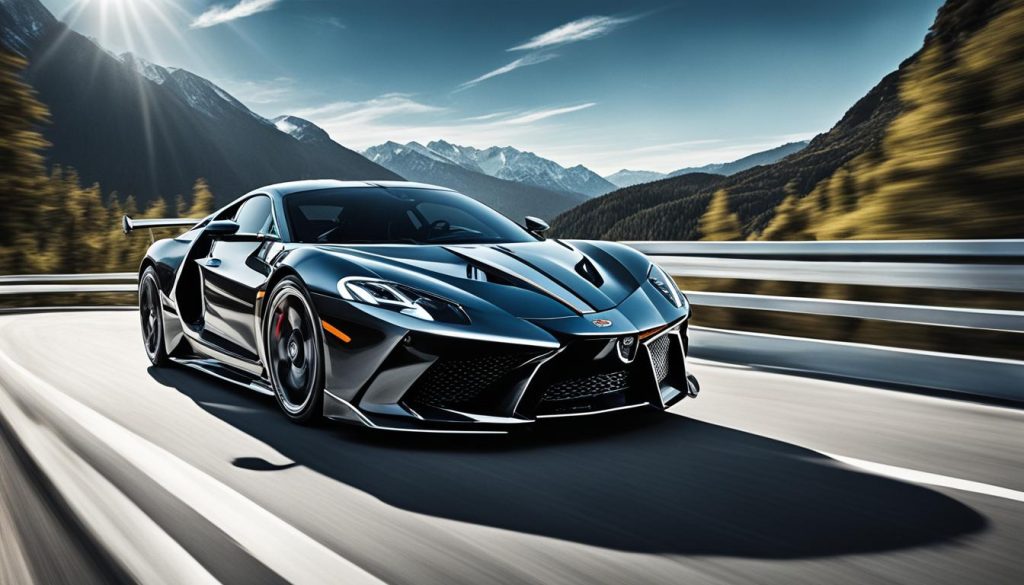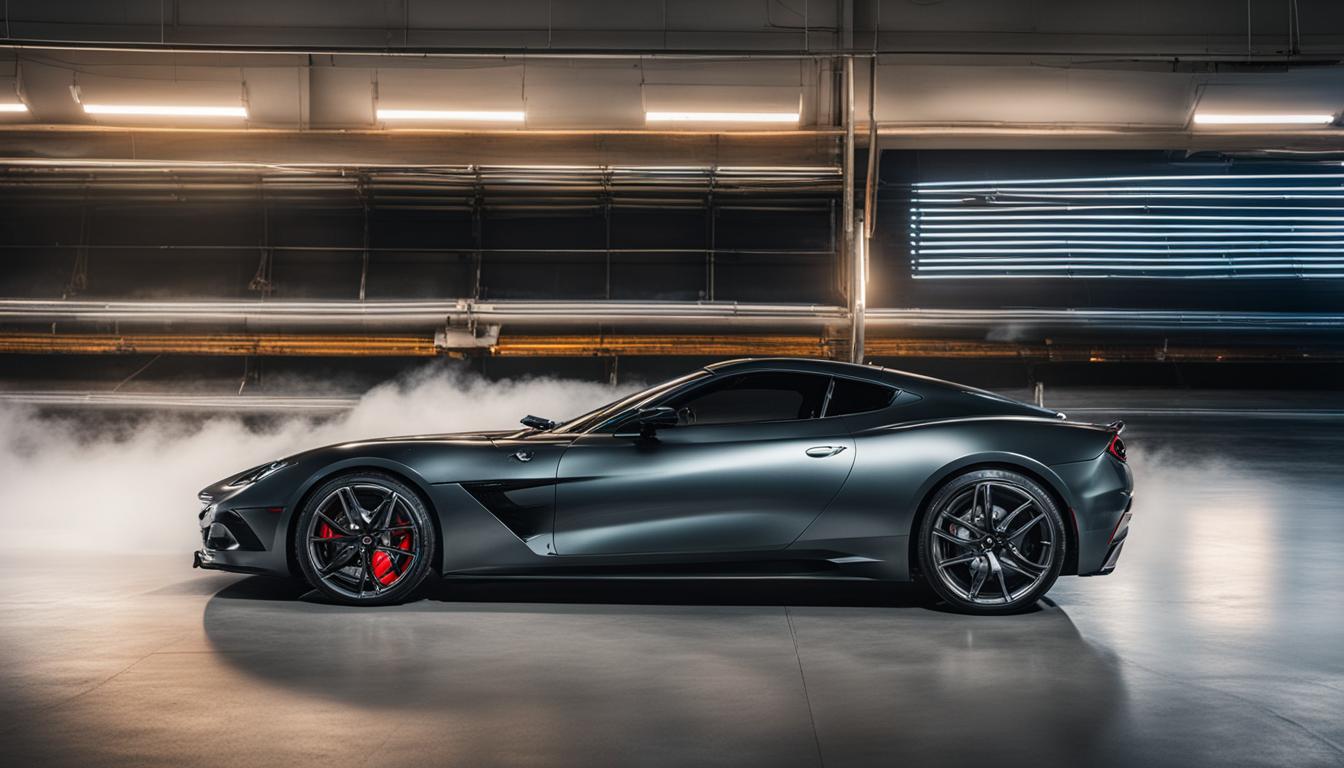Are you looking to capture stunning car images? Whether you’re a professional automotive photographer or an enthusiast, you need to have the right equipment, select the right location, and apply effective composition and framing techniques. Our comprehensive automotive photography checklist provides the essential tips you need to make your car images stand out.
Key Takeaways:
- Choosing the right location is crucial for capturing captivating automotive photographs.
- Essential equipment is required to achieve professional-grade images.
- The composition and framing of your shots play a crucial role in creating visually appealing images.
- Utilizing the rule of thirds and leading lines and reflections can add depth and interest to your photos.
- Practice and dedication are the keys to capturing stunning automotive images.
Choosing the Right Location
One of the key elements in automotive photography is the location. The backdrop you choose can make or break your car images. When selecting a location, it’s essential to keep in mind your target audience, the car type, and the specific features you want to showcase.
Consider scouting for unique locations such as abandoned factories, rural roads, or urban settings with interesting architecture. These locations can add an extra layer of interest and personality to your images.
Lighting conditions are also crucial when choosing a location. Bright, sunny days can provide sharp, vibrant images, while cloudy or overcast days can create softer, moodier shots. Use natural light to your advantage to produce dynamic and compelling car images.
Finally, before starting your photo shoot, ensure that your background is clean and free of any distractions that might divert attention away from the car. By following these simple tips for selecting a backdrop, you’ll enhance the overall aesthetics of your automotive photography.
Essential Equipment for Automotive Photography
Without the right equipment, capturing stunning automotive photographs can be challenging. Here is a list of must-have camera gear, lenses, filters, and accessories:
- Camera body: Choose a reliable and high-quality DSLR or mirrorless camera body that suits your needs and budget.
- Wide-angle lens: A wide-angle lens is ideal for capturing the entire car in a single shot. A popular option is the Canon EF 16-35mm f/2.8L III USM lens.
- Telephoto lens: A telephoto lens lets you capture close-up shots of specific car details, such as the wheels or headlights. The Nikon AF-S NIKKOR 70-200mm f/2.8E FL ED VR lens is a fantastic option in this category.
- Filters: Consider investing in polarizing and neutral density filters to reduce glare and manage exposure.
- Tripod: A sturdy tripod is essential for ensuring stability and preventing camera shake, especially when shooting in low light conditions.
- Remote Shutter Release: This accessory helps you avoid camera shake when you press the shutter button manually by allowing you to release the shutter from a distance.
- Cleaning Kit: Keep your camera and lenses in top condition by regularly cleaning them with a good-quality cleaning kit.
Properly maintaining your equipment is crucial for preserving its lifespan and ensuring optimal performance. Be sure to store your gear in a dry and secure area, away from direct sunlight or moisture. Regularly clean your camera body and lenses with a microfiber cloth and lens cleaner solution to avoid any damage.
“Investing in high-quality equipment may seem expensive, but it’s a worthwhile investment that yields stunning results in your automotive photography.”
Composition and Framing Techniques
Great automotive photography composition requires much more than just pointing and shooting your camera. By utilizing the right framing techniques, you can create car images that captivate the viewer’s attention and convey specific emotions.
One of the most important techniques in automotive photography composition is the rule of thirds. This compositional guideline suggests dividing the frame into thirds horizontally and vertically and placing the subject at one of the intersection points. Doing so creates a more visually appealing shot.
Another way to make your automotive photographs stand out is to experiment with different angles. Shoot from low angles to make cars look more imposing, or try high angles to create an aerial view of the vehicle.

Leading lines and reflections are additional tools that can add depth and interest to your car photographs. Play around with different framing techniques, and see how they can change your perspective of the car and the overall aesthetics of the image.
Don’t underestimate the power of framing when it comes to automotive photography. By using these techniques, you can create captivating car images that are not only visually appealing but also communicate the emotions you want to convey.
Conclusion
As we wrap up, we hope that these automotive photography tips have been informative and helpful in improving your car photoshoots. Remember to follow the essential automotive photography checklist, choose the right location, have the necessary equipment, and employ effective composition and framing techniques. Practice makes perfect, so keep honing your skills and experimenting with different techniques till you perfect your craft. Before we part ways, always remember that the key to capturing stunning automotive images is to have fun and enjoy the process. Happy clicking!






